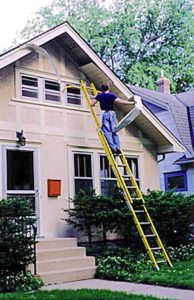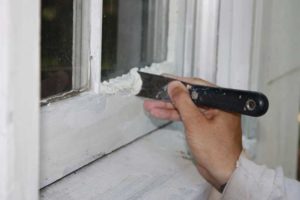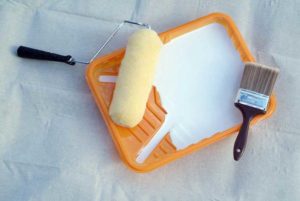Small Home Gazette, Spring 2021
Letter From the Editor: Cherish the Owners of Old Houses!
In 2019, a neighbor abruptly put his house up for sale after living on our block for little more than a year. His quick exit was a surprise because he had expressed happiness at owning his first home. Turns out the bungalow had taught him valuable lessons.
During that first year, he had to replace his furnace and his washer and dryer. It was too much. He couldn’t afford that level of ongoing maintenance.
 Home ownership isn’t for the faint of heart—especially those who believe in the myth of the “zero maintenance house.” A frequent complaint heard about old houses is how expensive they are to maintain.
Home ownership isn’t for the faint of heart—especially those who believe in the myth of the “zero maintenance house.” A frequent complaint heard about old houses is how expensive they are to maintain.
Let us compare a new house built in an urban neighborhood with its older neighbor across the street. That new house will retain its like-new sheen for a few years. But after a few dings and smudges, and corrections due to the contractor’s time-is-money rush to finish the house, it will need maintenance and repairs—just like that old house across the street, which offers few delusions of perfection.
Buyers pay a significant premium for new construction. The U.S. Commerce Department and National Association of Realtors say the price gap in 2020 between the higher median price of new homes and resales of existing homes is $70,000. That premium price for new construction would pay for a lot of repairs and updates to the older house.
 So, in dollars and cents, the added value of a new home in an established neighborhood is temporary. And if you compare the aesthetics and quality of materials between new and vintage construction—well, you know where the Twin Cities Bungalow Club stands on that.
So, in dollars and cents, the added value of a new home in an established neighborhood is temporary. And if you compare the aesthetics and quality of materials between new and vintage construction—well, you know where the Twin Cities Bungalow Club stands on that.
All homes need maintenance! That’s why creating and maintaining a home repair fund makes so much sense for every homeowner.
Owners of old houses are a breed apart. They hear the creaks, clangs, and coughs their house makes and learn which are worthy of investigation. They see the deflection in the house’s central beam; surface deterioration on basement walls; and the paint rubbing off the edge of the screen door. The brown stain on the ceiling or sewer gas odor in the basement or the lingering hint of the salmon dinner from three nights earlier tells them to look for a water leak; to unblock their plumbing vent pipes; or to install a ventilation fan.
 The relationship between an old house and its attentive owner is a special one. The house will communicate what it needs if we use our senses. Maybe the house has a long-term illness that is getting worse, or it is an acute condition needing immediate attention—like the sudden, sickening sound of water spraying out of a nearly invisible pinhole in the water heater at 3 a.m.! Responsible owners of old houses take these projects in stride—complaining, most certainly—but never so unhappy that they decide to sell. Their old house simply needs some TLC. These owners have earned our respect. We salute you!
The relationship between an old house and its attentive owner is a special one. The house will communicate what it needs if we use our senses. Maybe the house has a long-term illness that is getting worse, or it is an acute condition needing immediate attention—like the sudden, sickening sound of water spraying out of a nearly invisible pinhole in the water heater at 3 a.m.! Responsible owners of old houses take these projects in stride—complaining, most certainly—but never so unhappy that they decide to sell. Their old house simply needs some TLC. These owners have earned our respect. We salute you!











